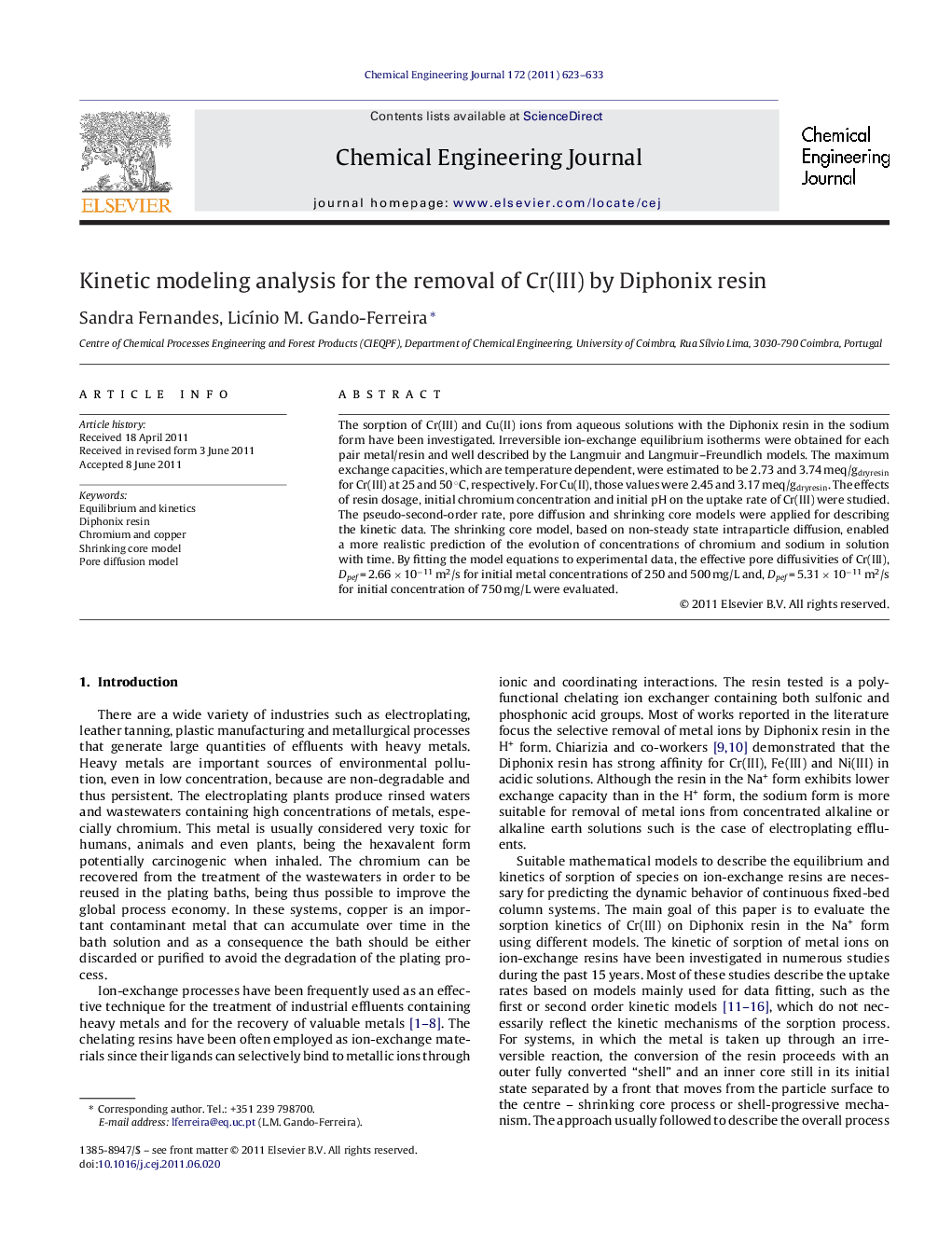| Article ID | Journal | Published Year | Pages | File Type |
|---|---|---|---|---|
| 150759 | Chemical Engineering Journal | 2011 | 11 Pages |
The sorption of Cr(III) and Cu(II) ions from aqueous solutions with the Diphonix resin in the sodium form have been investigated. Irreversible ion-exchange equilibrium isotherms were obtained for each pair metal/resin and well described by the Langmuir and Langmuir–Freundlich models. The maximum exchange capacities, which are temperature dependent, were estimated to be 2.73 and 3.74 meq/gdryresin for Cr(III) at 25 and 50 °C, respectively. For Cu(II), those values were 2.45 and 3.17 meq/gdryresin. The effects of resin dosage, initial chromium concentration and initial pH on the uptake rate of Cr(III) were studied. The pseudo-second-order rate, pore diffusion and shrinking core models were applied for describing the kinetic data. The shrinking core model, based on non-steady state intraparticle diffusion, enabled a more realistic prediction of the evolution of concentrations of chromium and sodium in solution with time. By fitting the model equations to experimental data, the effective pore diffusivities of Cr(III), Dpef = 2.66 × 10−11 m2/s for initial metal concentrations of 250 and 500 mg/L and, Dpef = 5.31 × 10−11 m2/s for initial concentration of 750 mg/L were evaluated.
► Sorption of Cr(III) and Cu(II) on Diphonix resin in sodium form was investigated. ► Increments in the sorption capacity for both metals were found as temperature increased. ► The kinetic of sorption of chromium is controlled by intraparticle diffusion. ► Kinetic data were well described by the pore diffusion and shrinking core models. ► The pore diffusivities for chromium and sodium may be dependent on initial metal concentration.
